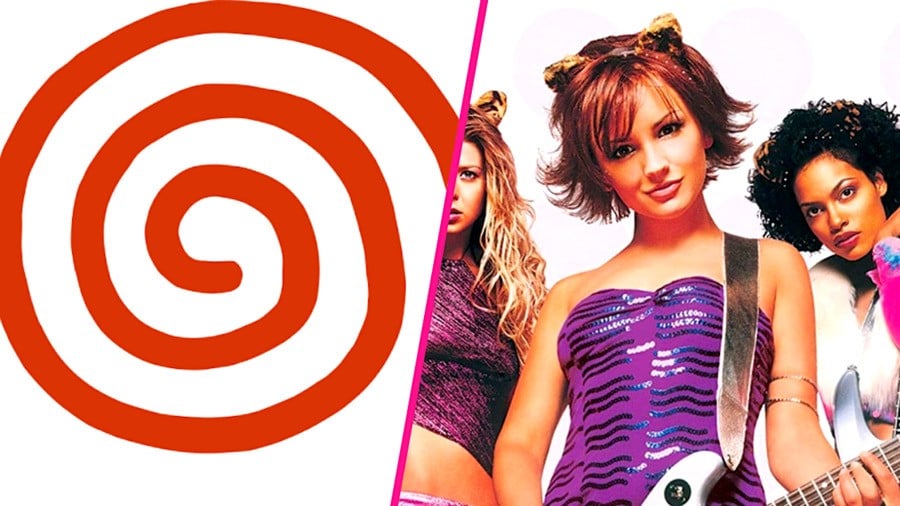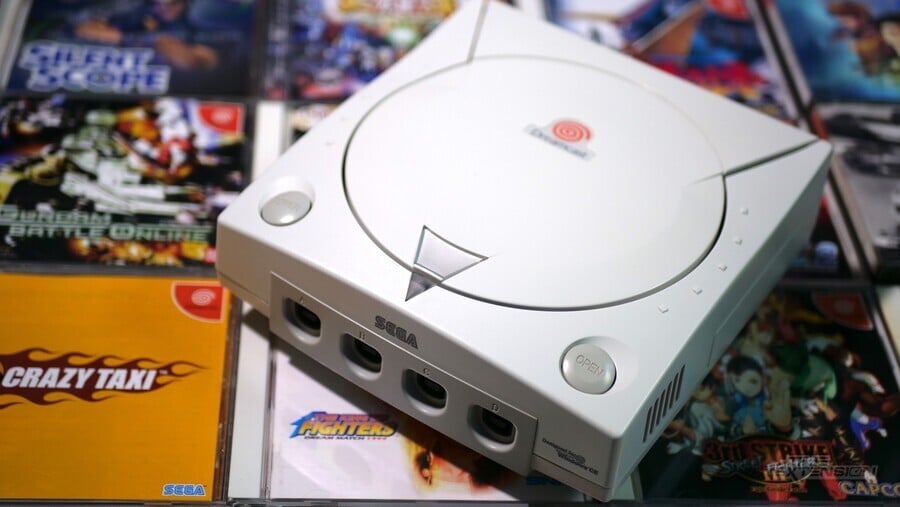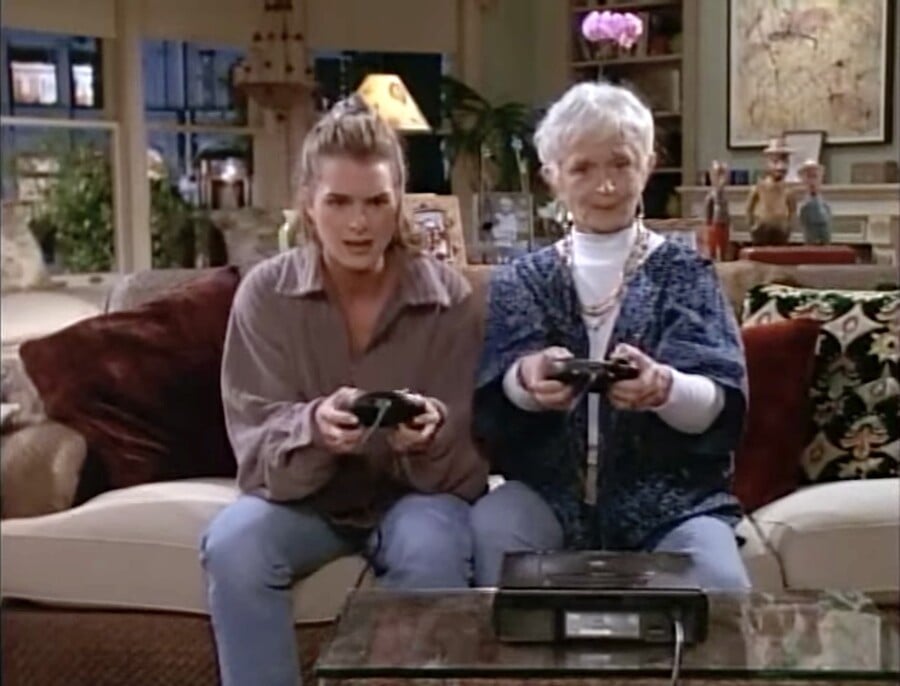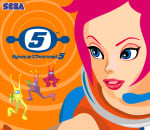
If you've ever watched the 2001 musical comedy Josie and the Pussycats, based on the Archie Comics series of the same name, you might be aware of the strange reappearance of Sega and Dreamcast throughout the film's runtime.
The movie — about a struggling rock band that's suddenly thrust into the spotlight and used for a nefarious scheme to brainwash teenagers into buying more products — featured product placement for a ton of real-world brands such as Sega, Dreamcast, America Online, and Starbucks. All in the pursuit of poking fun at the music industry and early 2000s consumer culture. Yet, out of all of the brands that appear, it's Sega and Dreamcast that are perhaps the most fascinating to us. Not just because we're a video game site by nature, but because they're arguably the brands that seem to appear in the film the most.
The movie's final concert, for instance, takes place in the fictional "Sega Megarena", you can constantly see advertisements for the Dreamcast and Sega hidden in the background of many of its shots, and there are even Dreamcast kiosks featuring Space Channel 5 and Crazy Taxi shown inside a music store.
What makes this all the more odder is that the film was actually released in April 2001 in the US, one month after Sega discontinued the console in order to become a third-party developer.
We wanted to find out more about how this product placement came to be, so we tracked down Sega's then-consumer promotions manager Heather Kashner, the then-vice president of branded integration at Norm Marshall & Associates Caressa Douglas who dealt with Sega's product placement at the time, and the film's co-director/co-writer Harry Elfont. They were able to give us a better insight into the nature of product placement and the exact circumstances that led to the company's appearance in the cult comedy.
Heather Kashner joined Sega in 1999 ahead of the September launch of the Sega Dreamcast in North America. She had worked with future Sega senior vice president of marketing (and future Sega of America president) Peter Moore while at Reebok and was brought on board to try and make Sega more appealing to a teenage demographic after the commercial disappointment of the Sega Saturn in the States. A big part of this was looking for opportunities to get the Dreamcast in front of this audience through attention-grabbing promotions and of course, product placement.

Kashner tells Time Extension, "I had a fairly big budget and what we decided to do as a team was really focus on being culturally relevant with boys 12-17. And that meant, not only focusing on trials, so getting them to try Dreamcast, which we did through a huge grassroots mobile tour where I think we were in over 120 markets throughout the US, but to do product placement. So, it was about, 'How do we become more visible and culturally relevant based on either TV shows that they are watching or movies that they are watching?'
"For product placement, we worked with an agency out of Los Angeles called Norm Marshall & Associates and I worked specifically with a woman named Caressa Douglas who is still in the product placement industry. We basically leaned on them, because they obviously get scripts in advance and they obviously know what’s coming down the pipeline, so we not only leaned on them for movies but to build relationships with prop masters and the people responsible for building the sets. I can’t remember all the TV shows we were in, but they did an amazing job of getting us placed within a lot of TV shows as well. So, it was really just a full-on assault of trying to get out and become culturally relevant in a very short amount of time through TV, film, consumer promotions, and events."
It was really just a full-on assault of trying to get out and become culturally relevant in a very short amount of time through TV, film, consumer promotions, and events.
By 1999, Douglas had already been working with Sega for three years, having struck up a professional relationship with the company in 1996 when working with a Brooke Shields' TV show called Suddenly Susan. At that time, a prop master on the show needed a gaming console for a scene and asked Douglas if they knew any gaming companies. Nintendo and Sony had representation from other agencies, so Douglas contacted Sega and they were able to send over a Sega Saturn overnight for Brooke Shields and Barbara Barrie to play on screen. From there, she placed Sega in a number of other TV shows and was present for the launch of the Dreamcast.
"Because the Dreamcast launch was so specific, we needed to have placements on screen the same window as the launch for everybody else," says Douglas. "That was the first time where what we did was, we figured out how to get empty boxes. So, we had consoles that looked like consoles but they didn’t work. So that’s what we learned with Dreamcast, we figured out how to get them made. We had those and we had to work with those with controllers that didn’t work and then off-camera we’d have someone playing the gameplay running on the screen that was pre-recorded, so it was definitely movie magic to make it all happen."

As most people understand it, product placement is when brands will pay productions to feature their products on screen, but according to Douglas, that isn't necessarily always the case.
"Product placement is not always product placement," Douglas tells us. "Brands are really important to storytelling, so not always is someone being purposeful from an agent or a brand side, it’s for the production or the writer. In one frame, a director can tell a story about a character through a brand. So, if a character drives up in an SUV versus a Lamborghini, we know [details about the character] in that one frame. It’s a great shorthand. But, then, if you imagine a world in entertainment devoid of brands or they’re all fake brands, I think it takes you out of the experience."
It's this comment that brings us to Josie and the Pussycats. Before filming for the movie began in August 2000, the filmmakers had decided that they wanted to use real brands in the upcoming production.
As the co-director Harry Elfont explains to us over email, "Since the movie was a satire of consumerism and popular trends, we wanted to create a world that was filled with branding and advertising. So, we needed as many brands as possible to make that work. We could have used fake products (like The Simpsons did with Duff Beer and Laramie Cigarettes) but we made the choice to try to get real brands because we thought it gave the satire a bit more teeth and just felt funnier."
According to his co-director/co-writer Deborah Kaplan on the film's behind-the-scenes commentary (available on the 20th Anniversary Edition Blu-Ray), none of the companies that appeared in the film actually paid Universal for the screentime, with the film's product placement person Kim Barker contacting as many companies and their agents as possible and offering them a role for free.
As Kaplan states in the commentary:
"It was very hard to get corporate sponsors to sign onto a movie using their logos where we’re actually making fun of the fact that they use them so much. So no cash exchanged hands."
From what we were able to find out, out of all the companies involved, Sega was one of the more relaxed when it came to its product placement.
"My experience and my perspective were that they were so willing to take risks," says Douglas. "When I think of Nintendo, I think of like mums buying for their kids. Then you had PlayStation that came in and it was very corporate, even though Sega was also a Japanese-owned company. But when we started working with Sega, Sega came in and this is my best illustration, it was the first time only I have ever seen in a marketing meeting, a dude comes in with full sleeves of tattoos [...] They were all about taking risks. They wanted to be disruptive. They wanted to shake things up. And that’s the way they saw themselves and that’s why they made such a big splash because they were willing to just go all out."
Kashner agrees. "I would say that we had a little more of a loose guideline because we just wanted to focus on driving awareness of Dreamcast and we weren’t as strict," she says. "Obviously, there were shows that we didn’t want to show up in, but we were a little bit more lenient on the opportunities if we felt it was going to be a big opportunity to drive awareness."
According to the Blu-Ray commentary, very few sets were used for the actual filming, with the film's production designer Jasna Stefanovic and the rest of the crew instead retrofitting locations on a budget to include the appropriate signage and props. The result ended up being a cartoonish version of our own world where Sega and Dreamcast seem to be omnipresent.
It's only in recent years that fans have started to notice and reflect on this peculiar crossover, with accounts like Segabits.com and Dreamcast Aesthetic leading the way.
"What we’re talking about here is really terrific about the longevity of what we do," argues Douglas, "Because Josie and the Pussycats filmed in 2000 before their release and here we are talking about it today, right? And the brand might not exist, but it’s that long tail where we’re still talking about Sega Dreamcast. And there are different generations, especially with streaming now, that may be discovering something new through streaming so it's a whole new set of eyeballs on it."
As for Kashner, she hasn't watched the film in 20 years but plans to eventually give it another watch. As she tells us, "I need to revisit that film because I’m sure it will bring back a lot of great memories."
If you find yourself particularly nostalgic for the days when Sega was still in the hardware race, it might be worth giving the film a watch. It's over-the-top and irreverent and is a strange time capsule from the early 2000s.

